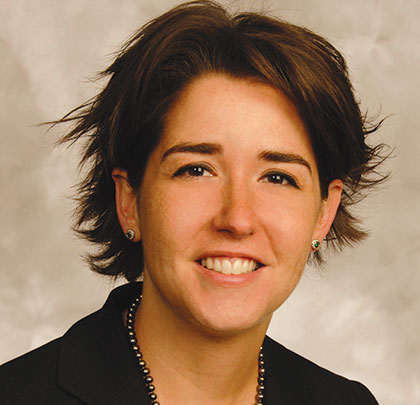Christy Perdue is a senior estimator for Brasfield & Gorrie, the largest general contractor in the Southeast. In this role, she is responsible for managing the procurement of process equipment during preconstruction phases. Her job is tasked with estimating and budget preparation, preconstruction services, value analyses, quality and schedule controls, and coordination of subcontractors and material suppliers. She was a featured speaker at WEFTEC 2014, bringing a contractor’s perspective of bidding procedures and equipment procurement. After her presentation, she spoke with Modern Pumping Today on why the time is right for the water industry to hear her message.
Modern Pumping Today: What are some ways that WEFTEC is the right audience for a contractor’s perspective?
Christy Perdue: WEFTEC is heavily attended by owners, design engineers, manufacturers, and equipment representatives. There are a few contractors who attend, but not many. All of these parties are involved in a project’s team, but we, as the contractor, are most often responsible for procuring the equipment. I was approached by the Manufacturers and Representatives Committee to speak with a panel about this topic. The panel included a design engineer, public owner, private owner, two manufacturers’ representatives, and an equipment manufacturer. We all spoke about our own unique perspectives on the topic. They have not had much input from contractors on the topic in the past. The session went well, and the message was received well. Even during the session preparation, I had many questions from my fellow panelists. Everyone seemed to be very interested in what the process looks like from our perspective.
MPT: As someone responsible for the procurement of process equipment during preconstruction phases, what are some key procurement concerns that the industry has been missing?
Christy Perdue: Two things come to mind here—bid forms and “or equal” proposals.
Bid forms can be quite time-consuming on bid day. We’re under the gun in the few hours leading up to the bid turn-in time. The more complex the bid form, the less time we have to receive pricing. In general, the more time we can spend receiving prices from subcontractors and vendors, the lower the overall project cost will be. With some of the more complicated bid forms, or multiple copies, we have to stop receiving pricing earlier, and this would logically result in higher project costs.
Bid forms often ask for extensive information about subcontractors, equipment manufacturers, alternate and unit prices, and so on. While some of this is beneficial for the project team, much of it could be turned in after the bid (hours or a few days).
Another hot topic from all perspectives at my speaking session this week involved evaluation of “or equal” products. These are equipment manufacturers that are not listed in the project specifications. During any bid, we receive pricing from many unlisted manufacturers, which puts us in a tough spot. Odds are this equipment will not be approved by the engineer during the submittal process, so this presents great risk for contractors. For us, it is not worth the risk, even if their pricing is lower than their listed competitors. Using these alternate manufacturers is a practice that is not beneficial to the project.
MPT: The Clean Water State Revolving Fund provides a number of procurement opportunities to different communities who might not have them otherwise, but also places some restrictions. In your experience, what conditions would you look for to recommend this program?
Christy Perdue: The State Revolving Fund is a major funding source for many projects that we pursue. For us, it means a bit of additional administrative effort, but it’s minimal compared to the opportunity it provides to the client. It enables them to construct these major improvement projects that they otherwise wouldn’t be able to. They are able to maintain or regain their permit compliance, which is a positive for the community as a whole.
MPT: You’ve worked on a number of large water projects, including sizable municipal applications. Since municipalities can sometimes be guilty of short-term solutions, how can including the contractor’s perspective help them see the bigger picture?
Christy Perdue: The project team’s ultimate goal is to provide the owner with a quality facility that will serve them for many years in the future. We find that, with the larger plant projects, the owner and design engineers are really focusing on that long-term solution. Of course funding can sometimes come into play, and can dictate a shorter-term solution. But, if the funding is there, I think they really do see the big picture.
Between major capital improvement projects, we’re all guilty of short-term solutions. We try to make do with what we have readily available. Some municipalities take great care of their facilities, which certainly lessens these short-term fixes. ■
MODERN PUMPING TODAY, November 2014
Did you enjoy this article?
Subscribe to the FREE Digital Edition of Modern Pumping Today Magazine!
![]()


